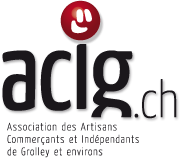Comprehending the Characteristics of Collaborative Understanding
In today’s increasingly interconnected world, the capability to work collaboratively is a vital ability. As conventional academic standards progress to fulfill the demands of the 21st century, collaborative discovering becomes a crucial idea. This write-up explores the complexities of joint knowing, discovering its advantages, strategies, and difficulties, while providing understandings into exactly how it shapes contemporary education and learning.
Collaborative discovering surpasses merely working together.
It embodies an academic approach where people take part in a collective initiative to acquire understanding, resolve problems, and accomplish a typical goal. This technique stresses the worth of variety in idea and fosters deeper understanding with interaction and shared experience.
The Advantages of Collaborative Learning
Collaborative discovering supplies a myriad of advantages, making it a popular approach in educational setups across the globe. Among the key advantages is the improvement of essential believing abilities. As students engage with peers, they are revealed to various viewpoints, motivating them to evaluate and evaluate details much more critically.
An additional significant advantage is the improvement in interaction skills. Collective understanding environments require active listening, express expression of concepts, and respectful discussion. These abilities are very useful, not just academically, but in expert and social contexts too.
Cognitive growth is also especially strengthened with joint efforts. Interacting needs students to verbalize their reasoning, challenge assumptions, and incorporate various perspectives, leading to much deeper cognitive processing and retention.
- Boosted crucial believing
- Enhanced interaction abilities
- Boosted cognitive development
- Greater retention rates
- Promoting of social and management abilities
The cumulative effect of these advantages is an extra alternative educational experience. Learners not only obtain knowledge yet also develop important life abilities that prepare them for future joint ventures in any field.
Approaches for Efficient Collaborative Knowing
Applying collective understanding efficiently requires thoughtful method and planning.

Educators should create an environment for cooperation, where students feel secure and motivated to participate honestly. Here are some methods that can promote effective collective knowing experiences.
First of all, establishing clear goals and assumptions is critical. When learners comprehend the objectives and their roles within the group, they are more probable to involve meaningfully. Educators ought to interact these goals explicitly and ensure they are straightened with the curriculum.
Second of all, the use of varied team frameworks can enhance the learning experience. By varying team structure, whether by ability level, passion, or history, educators can promote vibrant communications and a much more thorough understanding of the material.
Obstacles in Collaborative Understanding
While collective discovering offers numerous advantages, it is not without its obstacles. One typical concern is the disparity in group member involvement. Some individuals may dominate conversations, while others may be less inclined to add, resulting in a discrepancy in the learning experience.
- Disparate levels of participation
- Possible for problem
- Time monitoring difficulties
- Numerous levels of commitment
Furthermore, conflicts can occur as a result of differing viewpoints, working styles, or misconceptions. Educators needs to be equipped to handle these conflicts effectively, promoting an atmosphere where considerate dialogue dominates.
The Role of Technology in Collaborative Knowing
In the electronic age, innovation plays a crucial duty in helping with joint discovering. Online platforms break geographical obstacles, allowing people from varied areas to team up in actual time. These devices supply a multitude of attributes that enhance collaborative initiatives, from shared documents and discussion online forums to online conference rooms.
Technology not academic support just broadens the scope of that can join joint learning but additionally enhances the high quality of communication. Learners can access a broader series of resources, engage with interactive material, and apply their understanding in ingenious ways.
Future of Collaborative Learning
Looking in advance, the future of joint knowing appears appealing. As educational institutions continue to embrace technology and innovate instructional techniques, collaboration will likely end up being a keystone of finding out experiences in all degrees of education and learning.
Eventually, the essence of collaborative discovering lies in its capacity to equip people through shared initiative and good understanding. As we progress, growing these experiences will certainly be essential in preparing learners not just to prosper academically, however to thrive in a complex, interconnected globe.

